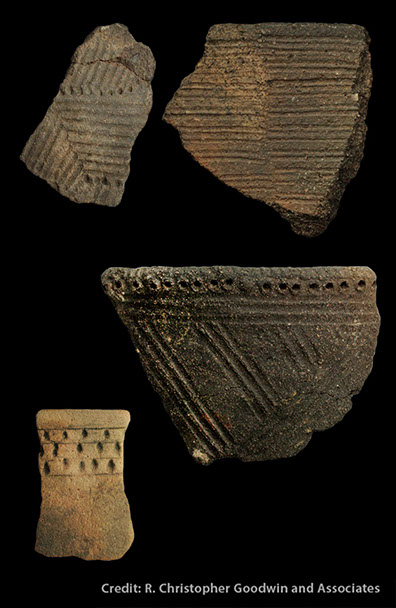Trade and Travel
People at the Tchefuncte site traveled or traded to get some minerals and rocks. However, they also made use of other raw materials that were nearby. Stone was not available at the site, so people had to travel at least a few miles to get it. Much of the stone for spear or dart points and other tools came from sources 15–25 miles north of the site.
The people at the site used a lot of yellow limonite and red hematite to make paint and dyes. Sources for these pigments, along with sandstone, were in northern Louisiana, Mississippi and Alabama. A few pieces of other stone came from farther away, like Arkansas and Tennessee.
Most of the ceramic pots and smoking pipes were made of local clays. However, examination of the clays indicate that some pots came from the Tombigbee River region of western Alabama. This shows that people at the Tchefuncte site were trading with people from that area or were traveling there.
Archaeologists found 42 pieces of pumice at the site. Pumice is a volcanic rock, so these fragments came from very far away. The source of the pumice may have been a volcano in Mexico or in the Caribbean Ocean. Pumice floats, and these pieces could have washed up on a beach in Louisiana rather than arriving through trade. The pumice also could have been acquired by trade from the western United States.

Next
Back
Examples of pottery from the Tchefuncte site that came from the Tombigbee region.